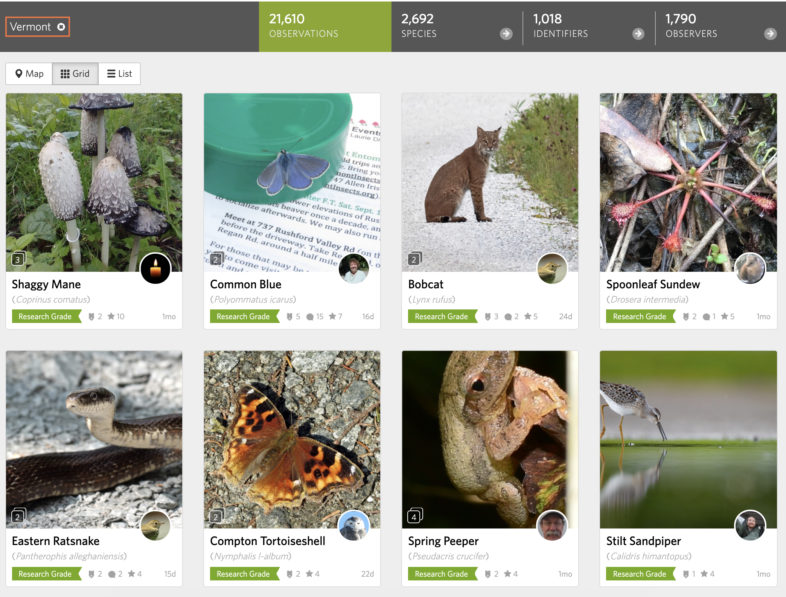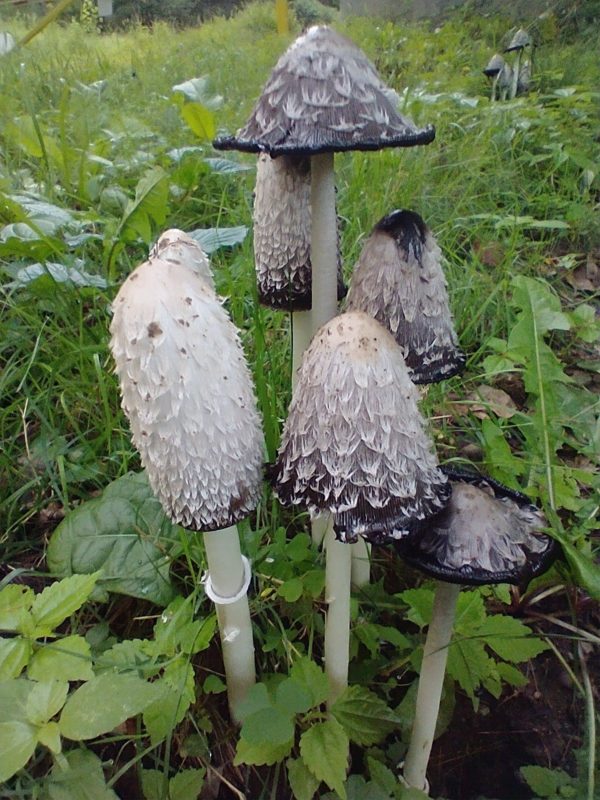Congratulations to Tom Norton for winning the September 2020 Photo-observation of the Month for the Vermont Atlas of Life on iNaturalist. His image of Shaggy Mane (Coprinus comatus) captured the most votes from other iNaturalists. Some of you may recognize Tom from his help in identifying your observations. Amazingly, he’s made 293,706 identifications in iNaturalist, helping observations reach “research grade.”
Shaggy Mane tends to spring up after rainy autumn days and is easily identified by the shaggy appearance. It undergoes a startling transition in late fall in an effort to distribute its spores. The tall, oblong shape of the Shaggy Mane gives it an advantage over other mushrooms, as it has much more room in its gills to store the spores that will go on to become new fungal bodies. The conundrum this fungi faces is how to distribute its spores when they are all hidden deep within the cap. Deliquescence is the answer. As the fungus matures, the cap slowly deliquesces, or appears to melt away. The cap slowly liquefies from bottom-to-top into an inky sludge, and the spores that were hidden deep within the cap are exposed to the wind and free to blow on to their next destination.

With neary 21,000 photo-observations submitted by 1,790 observers in September, it was extremely competitive. Click on the image to see and explore all of the amazing photo-observations, including the first record ever recorded of Common Blue butterfly, a species introduced to Quebec from Europe that has now arrived in Vermont.
Visit the Vermont Atlas of Life on iNaturalist where you can vote for the winner this month by clicking the ‘fav’ star on your favorite photo-observation. Make sure you get outdoors and record the biodiversity around you, then submit your discoveries and you could be a winner!


Are only caps dangerous?